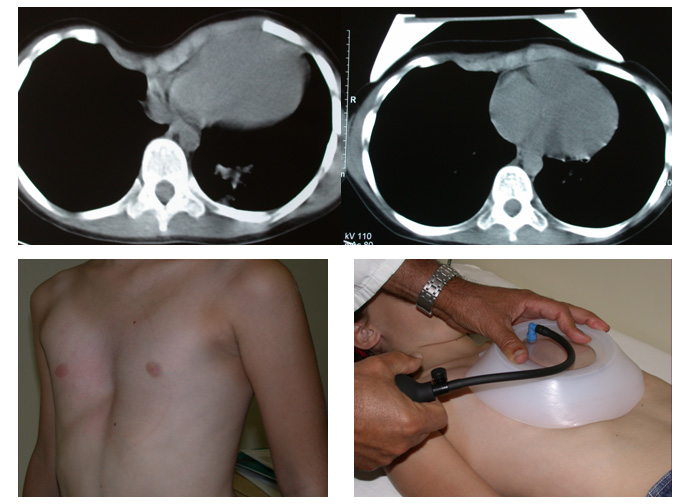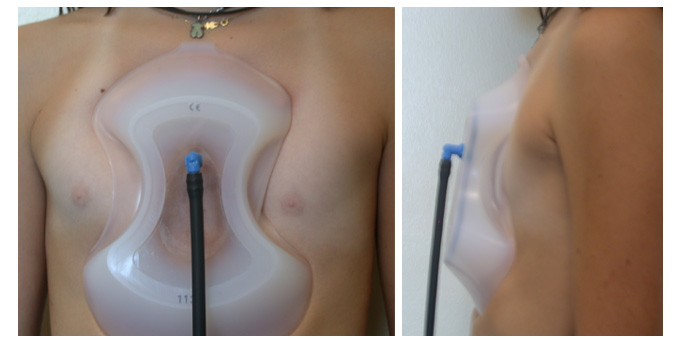Non-surgical treatments for Pectus Excavatum
Psychological support and advises
In many children, and sometimes without a direct connection to the defect's severity, the effect on the mental sphere is so important that it may be useful the visit and support of a psychological team. Every child must be individually evaluated and always with the appropriate advice of the paediatrician or the surgeon.
Physiotherapy and postural development
It is demonstrated that the physiotherapy and the programmes to improve the postural development are essential to aid the patients with pectus excavatum.
Lots of patients present rounded and fallen shoulders, and a cyphotic posture. They are the most benefited from exercise programmes and re-education and improvement of the posture.
Nonetheless, they must be propperly leaded because the exercises that develop the pectoral muscles will worsen the physical appearance and will emphasize the deformity. This can happen within girls in their moment of pectoral development as it may stress the asymmetries in the underlying ribs.
It is recommended to practice sports such as swimming.
Therapy with the Suction Bell
This treatment consists on the application of a bell upon the depressive defect that creates a vacuum and restores the thoracic wall, as it can be observed in the CAT scan image.
There are different applicable sizes depending on the child's age and the kind of pectus. For the girls, there is a model with a different design to avoid the suction of the mammary gland.
The bell is firstly used in short periods and the collocation time is increased as days go on. The bell treatment must always be indicated and supervised by a surgeon as there might be collateral effects as the formation of haematomas, even if always temporary.
The bell is a useful therapeutic option if there is determination and a long period of time, maybe one or two years. Children usually reject such uncomfortable treatments, even though if surgery wants to be avoided, this is an alternative pathway. Bringing the bell a short time before the operation is also useful if surgery has been planned. It produces a manifest elasticity in the osteo-cartilage structures of the thoracic wall and, consequently, a postoperatory with less pain.
Dynamic Chest Compressor (DCC) treatment
This method has been used in a few patients. It is a long treatment.
Thoracic remodelling by magnetic devices
Jamshidi and Harrison (2007) have evaluated the results of a system in which they apply fields of magnetic forces to elevate the sternum. To do this, they implant a magnetic mechanism in the sternum -apparently innocuous for the organism. A device that embraces the ribs and elevated the sternum is placed on the outside. A shaping is achieved by means of magnetic forces that are applied for a long period. These methods still require a better evaluation.



